The full weight of U.S. policing has descended upon protesters across the country as people take to the streets to denounce the police killings of Breonna Taylor, George Floyd, and countless others who have been subjected to police violence. Along with riot shields, tear gas, and other crowd control measures also comes the digital arm of modern policing: prolific surveillance technology on the street and online.
For decades, EFF has been tracking police departments’ massive accumulation of surveillance technology and equipment. You can find detailed descriptions and analysis of common police surveillance tech at our Street-Level Surveillance guide. As we continue to expand our Atlas of Surveillance project, you can also see what surveillance tech law enforcement agencies in your area may be using.
If you’re attending a protest, don’t forget to take a look at our Surveillance Self-Defense guide to learn how to keep your information and digital devices secure when attending a protest.
Here is a review of surveillance technology that police may be deploying against ongoing protests against racism and police brutality.
Surveillance Tech that May be Visible
Body-Worn Cameras
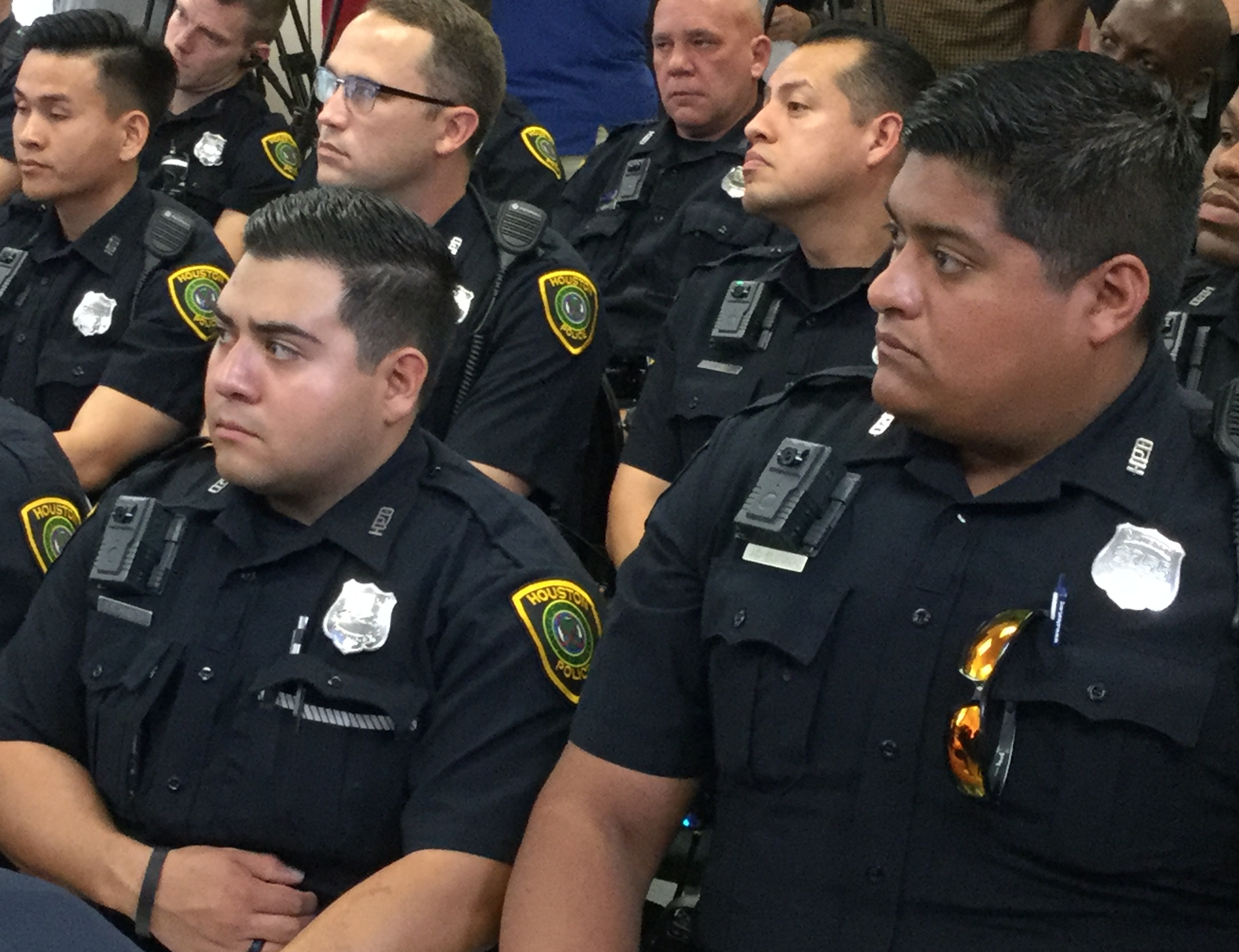
Officers wearing new body cams for the first time. Source: Houston Police Department
Unlike many other forms of police technology, body-worn cameras may serve as both a law enforcement and a public accountability function. Body cameras worn by police can deter and document police misconduct and use of force, but footage can also be used to surveil both people that police interact with and third parties who might not even realize they are being filmed. If combined with face recognition or other technologies, thousands of police officers wearing body-worn cameras could record the words, actions, and locations of much of the population at a given time, raising serious First and Fourth Amendment concerns. For this reason, California placed a moratorium on the use of face recognition technology on mobile police devices, including body-worn cameras.
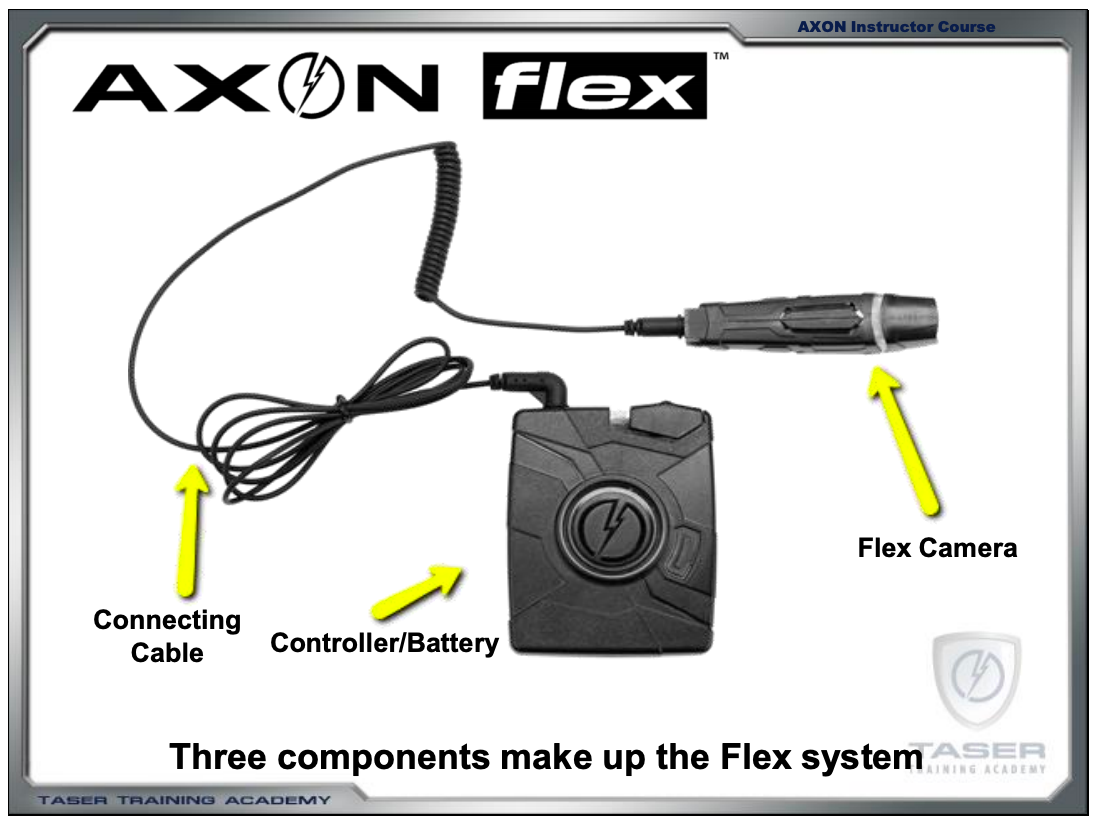
Axon Flex camera system. Source: TASER Training Academy presentation for Tucson Police Department
Body-worn cameras come in many forms. Often they are square boxes on the front of an officers chest. Sometimes they are mounted on the shoulder. In some cases, the camera may be partially concealed under a vest, with only the lens visible. Companies also are marketing tactical glasses that includes a camera and face recognition; we have not seen this deployed in the United States–yet.
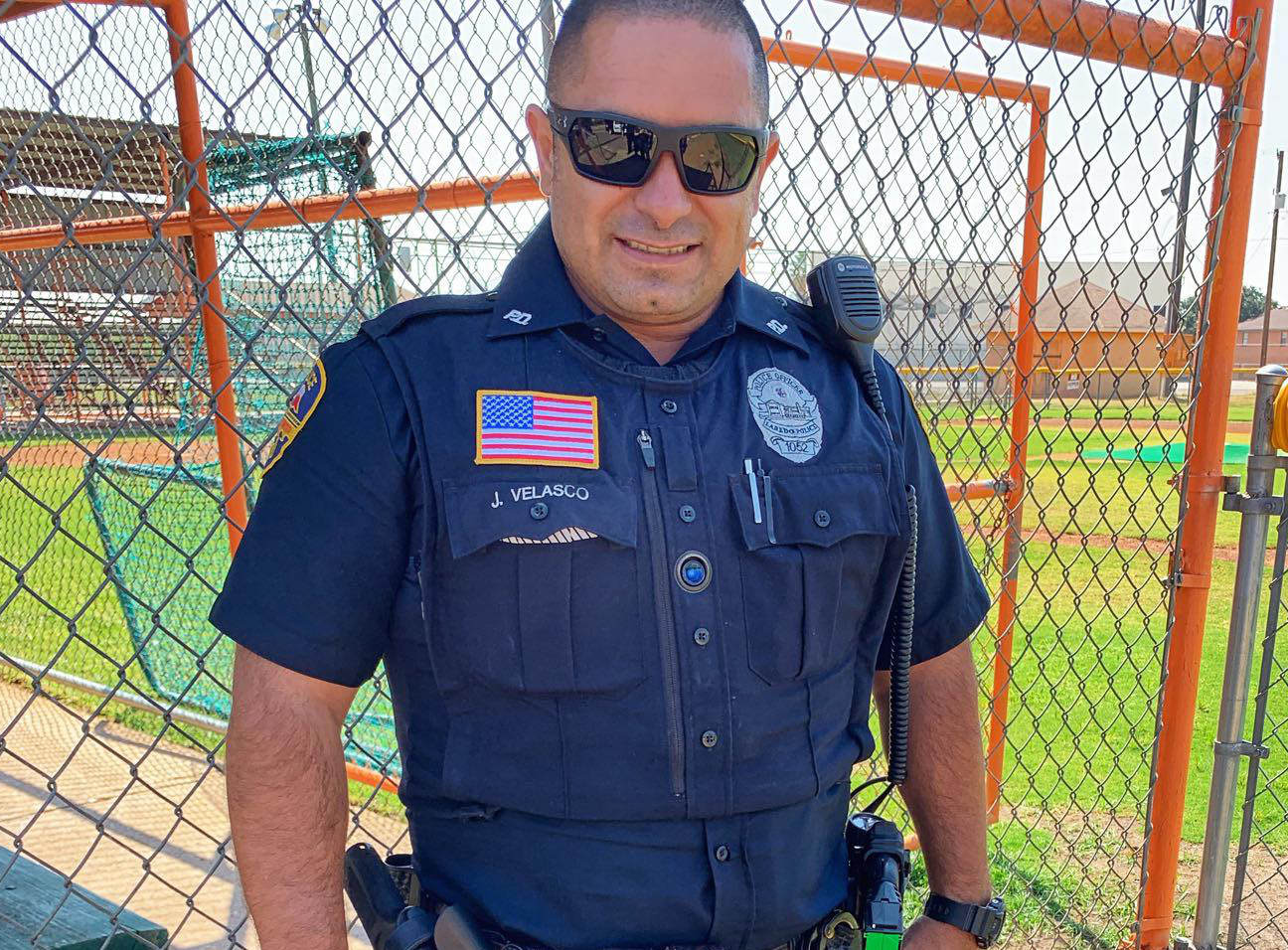
A body-worn camera lens is visible between the buttons on a Laredo Police officer’s vest. Source: Laredo Police Department Facebook
Drones
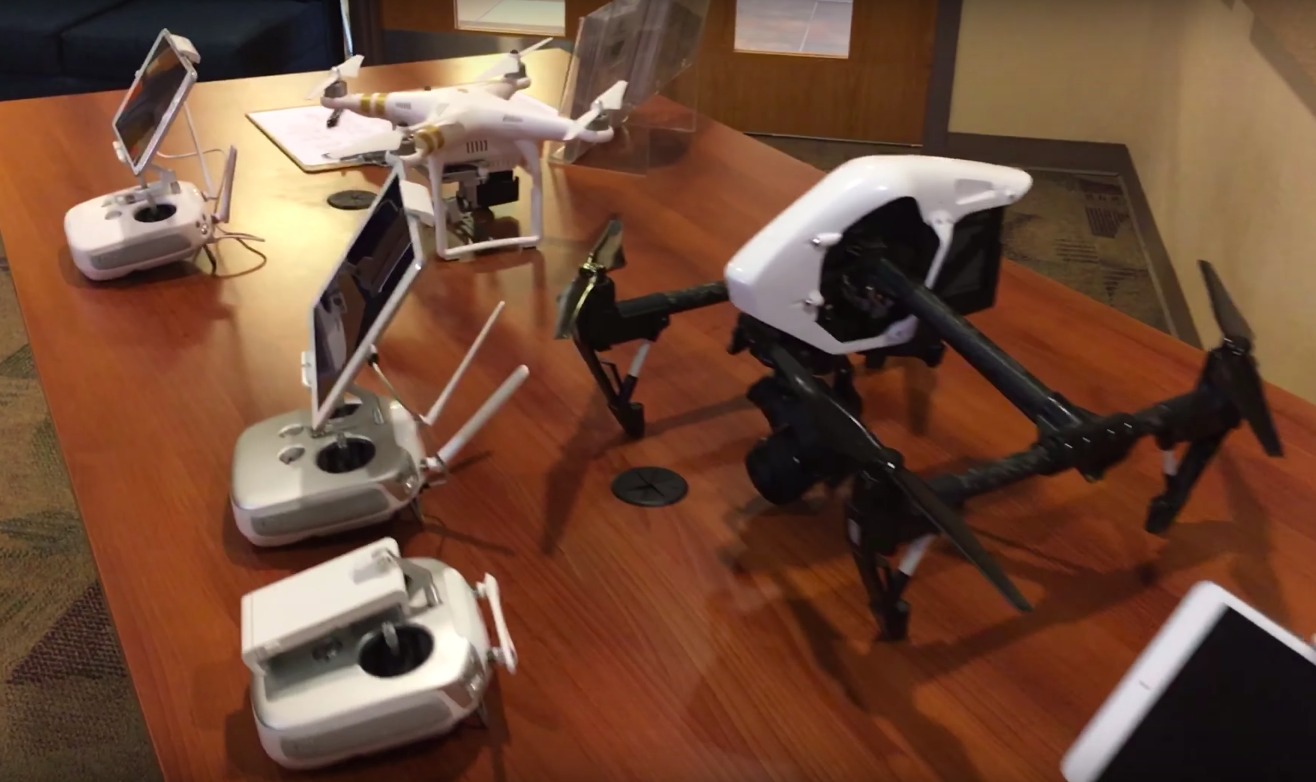
Sahuarita Police Department display its drones on a table. Source: Town of Sahuarita YouTube
Drones are unmanned aerial vehicles that can be equipped with high definition, live-feed video cameras, thermal infrared video cameras, heat sensors, automated license plate readers, and radar—all of which allow for sophisticated and persistent surveillance. Drones can record video or still images in daylight or use infrared technology to capture such video and images at night. They can also be equipped with other capabilities, such as cell-phone interception technology, as well as back-end software tools like license plate readers, face recognition, and GPS trackers. There have been proposals for law enforcement to attach lethal and less-lethal weapons to drones.
Drones vary in size, from tiny quadrotors (also known as Small Unmanned Aerial Vehicles or sUAVs) to large fixed aircraft, such as the Predator Drone. They are harder to spot than airplane or helicopter surveillance, because they are smaller and quieter, and they can sometimes stay in the sky for a longer duration.
Activists and journalists may also deploy drones in a protest setting, exercising their First Amendment rights to gather information about police response to protestors. So if you do see a drone at a protest, you should not automatically conclude that it belongs to the police.
Automated License Plate Readers
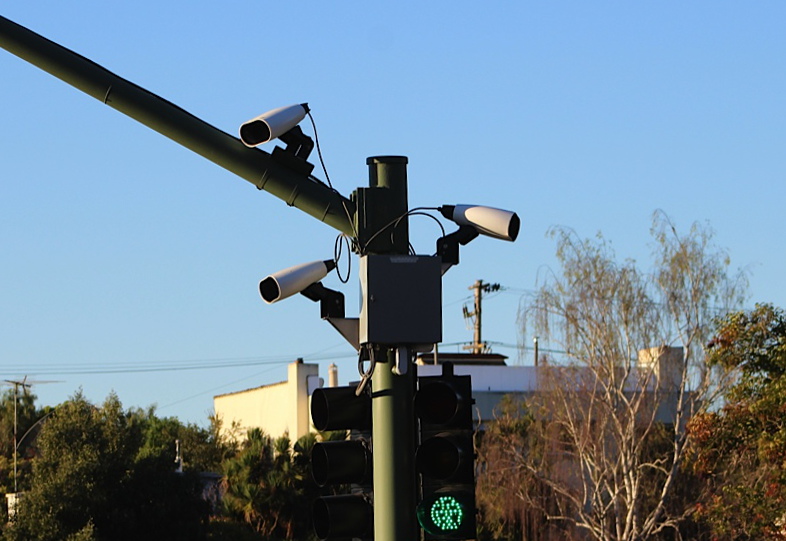
Photo by Mike Katz-Lacabe (CC BY)
Automated license plate readers (ALPRs) are high-speed, computer-controlled camera systems that can be mounted on street poles, streetlights, highway overpasses, mobile trailers, or attached to police squad cars. ALPRs automatically capture all license plate numbers that come into view, along with the location, date, and time. The data, which includes photographs of the vehicle and sometimes its driver and passengers, is then uploaded to a central server.
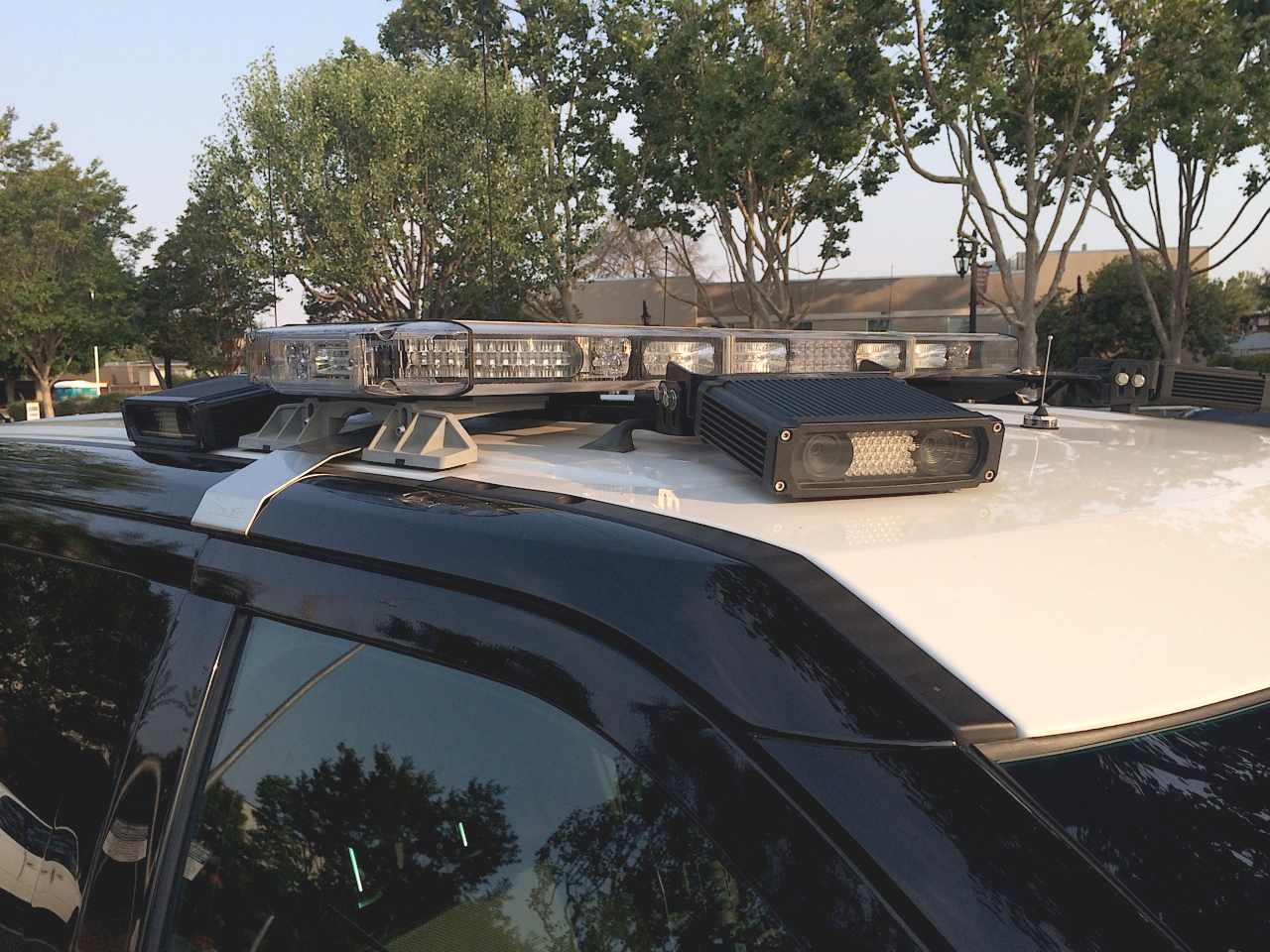
Photo by Mike Katz-Lacabe (CC BY)
At a protest, police can deploy ALPRs to identify people driving toward, away from, or parking near a march, demonstration, or other public gathering. For example, CBP deployed an ALPR trailer at a gun show attended by Second Amendment supporters. Used in conjunction with other ALPR’s around the city, police could track protestors’ movement as they traveled from the demonstration to their homes.
Mobile Surveillance Trailers/Towers

A ‘Mobile Utility Surveillance Tower’ at San Diego Comic-Con and a mobile surveillance pole in New Orleans’ French Quarter
Hundreds of police departments around the country have mobile towers that can be parked and raised a number of stories above a protest. These are often equipped with cameras, spotlights, speakers, and sometimes have small enclosed spaces for an officer. They also often have ALPR capabilities.
Common towers include the Terrahawk M.U.S.T. which looks like a guard tower mounted on a van and the Wanco surveillance tower, which is a truck trailer with a large extendable pole.
FLIR Cameras
Forward-looking infrared (FLIR) cameras are thermal cameras that can read a person’s body temperature and allow them to be surveyed at night. These cameras can be handheld, mounted on a car, rifle, or helmet, and are often used in conjunction with aerial surveillance such as planes, helicopters or drones.
Surveillance Tech That May Not Be Visible
Face Recognition (or other Video Analytics)

Face recognition in the field from a San Diego County presentation
Face recognition is a method of identifying or verifying the identity of an individual using their face. Face recognition systems can be used to identify people in photos, video, or in real-time. Law enforcement may also use mobile devices to identify people during police stops.
At a protest, any camera you encounter may have face recognition or other video analytics enabled. This includes police body cameras, mounted cameras on buildings, streetlights, or surveillance towers.
Also, some police departments have biometric devices, such as specialized smartphones and tablets, that show the identity of individuals in custody. Likewise, face recognition can occur during the booking process at jails and holding facilities.
Social Media Monitoring
Social media monitoring is prevalent, especially surrounding protests. Police often scour hashtags, public events, digital interactions and connections, and digital organizing groups. This can be done either by actual people or by an algorithm trained to collect social media posts containing certain hashtags, words, phrases, or geolocation tags.
EFF and other organizations have long called on social media platforms like Facebook to prohibit police from using covert social media accounts under fake names. Pseudonyms such as “Bob Smith” have long allowed police to infiltrate private Facebook groups and events under false pretenses.
Cell-Site Simulators
Cell-site simulators, also known as IMSI catchers, Stingrays, or dirtboxes, are devices that masquerade as legitimate cell-phone towers, tricking phones within a certain radius into connecting to the device rather than a tower.
Police may use cell-site simulators to identify all of the IMSIs (International Mobile Subscriber IDs) at a protest or other physical place. Once they identify the phones’ IMSIs, they can then try to identify the protesters who own these phones. In the non-protest context, police also use cell-site simulators to identify the location of a particular phone (and its owner), often with greater accuracy than they could do with phone company cell site location information.
Real-time Crime Centers

Fresno Police Department’s Real-time Crime Center. Source: Fresno PD Annual Report 2015
Real-time crime centers (RTCCs) are command centers staffed by officers and analysts to monitor a variety of surveillance technologies and data sources to monitor communities. RTCCs often provide a central location for analyzing ALPR feeds, social media, and camera networks, and offer analysts the ability to use predictive algorithms.
Source: EFF.org
Matthew Guariglia is a policy analyst working on issues of surveillance and privacy at the local, state, and federal level. He received a PhD in history at the University of Connecticut where his research focused on the intersection of race, immigration, U.S. imperialism, and policing in New York City. He is a frequent contributor to the Freedom of Information-centered outlet Muckrock and his bylines have also appeared in the Washington Post, Slate, and Motherboard. Matthew is a visiting scholar in the department of history at UC-Berkeley and serves as an editor of “Disciplining the City,” a series on the history of urban policing and incarceration at the Urban History Association’s blog The Metropole.
Subscribe to Activist Post for truth, peace, and freedom news. Become an Activist Post Patron for as little as $1 per month at Patreon. Follow us on SoMee, HIVE, Flote, Minds, and Twitter.
Provide, Protect and Profit from what’s coming! Get a free issue of Counter Markets today.


Be the first to comment on "How to Identify Visible (and Invisible) Surveillance at Protests"